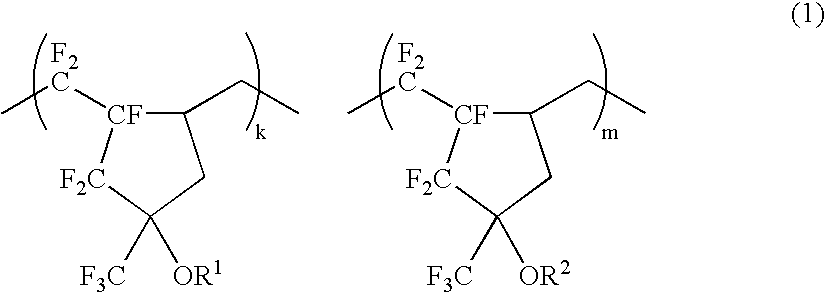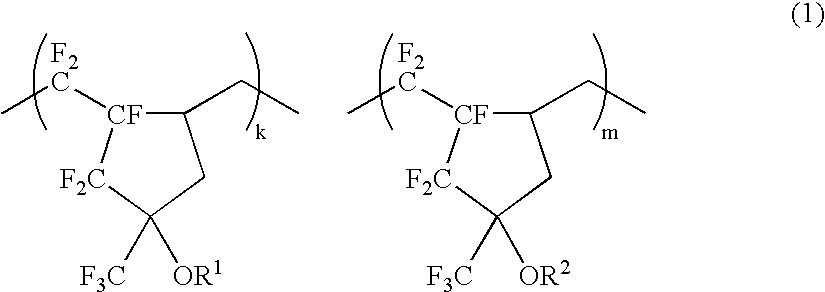Resist compositions and patterning process
- Summary
- Abstract
- Description
- Claims
- Application Information
AI Technical Summary
Benefits of technology
Problems solved by technology
Method used
Image
Examples
example
Examples of the invention are given below by way of illustration and not by way of limitation.
Evaluation
Polymer Transmittance Measurement
Polymers 1-7 shown below and blends thereof (in a weight ratio as shown in Table 1) were determined for transmittance.
Each polymer or polymer blend, 1 g, was thoroughly dissolved in 12 g of propylene glycol monomethyl ether acetate (PGMEA), and passed through a 0.2-μm Teflon® filter, obtaining a polymer solution. The polymer solution was spin coated onto a MgF2 substrate and baked on a hot plate at 100° C. for 90 seconds, forming a polymer film of 200 nm thick on the substrate. Using a vacuum ultraviolet spectrometer (VUV-200S by Nihon Bunko K.K.), the polymer film was measured for transmittance at 248 nm, 193 nm and 157 nm. The results are shown in Table 1.
TABLE 1Polymer blendTransmittance (%)(weight ratio)248 nm193 nm157 nmPolymer 1 + Polymer 2 (8:2)939163Polymer 1 + Polymer 2 (6:4)939055Polymer 1 + Polymer 3 (8:2)929061Polymer 1 + Polymer 4 (8:...
PUM
| Property | Measurement | Unit |
|---|---|---|
| Nanoscale particle size | aaaaa | aaaaa |
| Length | aaaaa | aaaaa |
| Length | aaaaa | aaaaa |
Abstract
Description
Claims
Application Information
 Login to View More
Login to View More - R&D
- Intellectual Property
- Life Sciences
- Materials
- Tech Scout
- Unparalleled Data Quality
- Higher Quality Content
- 60% Fewer Hallucinations
Browse by: Latest US Patents, China's latest patents, Technical Efficacy Thesaurus, Application Domain, Technology Topic, Popular Technical Reports.
© 2025 PatSnap. All rights reserved.Legal|Privacy policy|Modern Slavery Act Transparency Statement|Sitemap|About US| Contact US: help@patsnap.com



